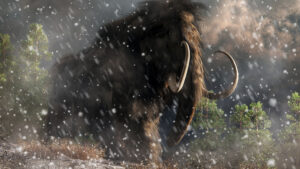In 2006, during the long, dark arctic winter, Borge Ousland and Mike Horn set off on the most masochistic expedition imaginable. Their journey would take them from the tip of Siberia to the North Pole, over suspicious ice and freezing water, all while navigating in constant darkness.
Each man already owned an impeccable resumé. Ousland, the preeminent cold-weather adventurer, had made the first unsupported ski journey to the North Pole in 1990 with Erling Kagge. As an encore, he completed the first solo, unsupported trek to the North Pole in 1994. In 1997, he became the first person to cross Antarctica solo, after a mammoth 3,000km slog.
Horn was less specialized, a jack-of-all-trades, tough-as-nails adventurer straight out of a Boy’s Own comic. Horn had cut his teeth on a six-month solo expedition from the shores of the Pacific in Peru to the mouth of the Amazon in Brazil. Next came an 18-month trip tracing the equator without motorized transport, which had catapulted him to mainstream fame. Finally, in 2002, he finished circumnavigating the planet along the Arctic Circle, and again, shunning any form of motorized transport.

Horn circumnavigating the equator. Photo: Mike Horn
Two alpha males, each almost peerless and accustomed to extreme solo expeditions, would team up to take on a challenge so dangerous that they were legally barred from attempting it solo.
The pair flew into Cape Arktichevsky, Siberia in mid-January. The plan was to arrive at the Pole before March 20, when the wan arctic sun finally crawls over the horizon and ends six-months of perpetual darkness.
Almost immediately their plans were derailed. The sea ice, upon which they needed to take their first cautious steps, was churning quickly in the wrong direction, away from the Pole. They camped on the peninsula, waiting for their luck to change, only to suffer constant harassment from hungry polar bears. On the first night, they had to chase off a curious bear with their flare gun. The second night seemed peaceful, but in the morning they found that their dinghy had been thoroughly chewed up. They hadn’t even heard the commotion over the flapping of their tent in the howling wind.

Horn and Ousland fully iced up. Photo: Borge Ousland
Rather than continue to socialize with the bears, they took off onto the ice on January 22, despite the strong negative drift. For the next 17 days, they fought to make progress. Each time they slept, they slipped kilometres backward from the Pole. Still feeling each other out, sharing a tiny tent, and having their progress constantly eroded, the psychological toll must have been huge.
They endured and turned a metaphorical corner on day 17. They escaped the backward drift and jettisoned two sleds to continue with one each. Navigating in the dark, primarily from the orientation of sastrugi because stopping often to look at the GPS risked frostbite, they edged forward. Each area of thin ice had to be probed and prodded, channels of open water had to be forded in full drysuits, their sleds bobbing along behind them.
On a typical day, they hauled for 11 hours, always enveloped in darkness. On day 33, Horn fell through the ice, not once but twice. Horn recovered from both dips. He was lucky: Unplanned splashdowns are no laughing matter in -40°C.
After six weeks in the dark, the first hints of sunlight painted the horizon behind them. Their slow start meant that they were cutting it fine to make the Pole by the spring equinox. A last push would be required. But with the finish line just a week away, Horn’s condition took a nasty turn. He complained of constant pain in his joints and blood in his stool. His thumbs oozed pus when he squeezed them.
Things looked bleak. Informed of Horn’s condition, the expedition manager even considered having a paramedic skydive in to treat him. But ever the hard man, Horn continued to haul for 10 hours a day.
On March 20, the sun finally appeared over the horizon, marking the start of spring. Ousland and Horn hadn’t made the Pole.

The sun finally emerges over the horizon, ending six months of darkness. Photo: Borge Ousland
In the end, they arrived just two days late, side-by-side, at the top of the earth. The grueling trek had taken 60 days and five hours. Their late arrival meant that they had technically missed out on a complete winter expedition, but as we saw with Voytek Kurtyka’s near-climb of the Shining Wall, a minor failure does nothing to diminish a great achievement.
Their expedition pushed the limits of human endurance, both mental and physical. Together, two solo adventurers had done the almost impossible, pushing beyond their individual limits and expanding their skill sets. The expedition built skills that they put to use in last year’s epic crossing of the Arctic Ocean: The ability to gauge the shifting, breaking sea ice, and to monitor constantly evolving conditions while operating in extreme cold and perpetual darkness.
But as incredible as their 2019 ocean crossing is, this first expedition was the riskier proposition; a true leap into the unknown for both men.






